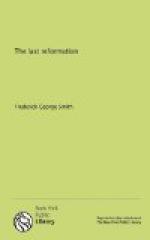“And another third kingdom of brass, which shall bear rule over all the earth.” This refers to the Macedonian, or Greek, empire founded by Alexander the Great. After subduing Greece and reducing Egypt, Alexander penetrated into Asia, took Tyre, met and overthrew Darius the Persian at Arbela, in 331 B.C., thus terminating the Persian Empire. The Grecian Kingdom had less external magnificence than those which preceded it and was founded and maintained by force of arms; but it was more extensive than the others, including many dominions in Europe, Africa, and regions farther to the east in Asia than had before been penetrated. It was foretold that this kingdom should “bear rule over all the earth”; it was the main boast of Alexander that he had subdued the whole world.
“And the fourth kingdom shall be strong as iron: forasmuch as iron breaketh in pieces and subdueth all things: and as iron that breaketh all these, shall it break in pieces and bruise” (verse 40). This corresponds to the “legs of iron, his feet part of iron and part of clay,” in the dream itself. The reference is to the Roman Empire, which succeeded the Grecian. Whether or not the two legs had any special significance is not stated, but commentators frequently refer us to the two divisions into which the empire of Rome was afterwards divided—East and West. So also the ten toes of the image are often explained as signifying the ten minor kingdoms which grew out of the empire. But we should bear in mind that this is not stated either in the vision itself or in its inspired interpretation. Only four kingdoms are referred to as such. The fourth division, representing Rome (in both its strong and its weak condition), is described simply as “the kingdom,” “the fourth kingdom.” The Roman Kingdom was at first “as strong as iron.” No other people have ever made such extensive conquests through a long period of time as did the Romans.
If Nebuchadnezzar’s dream brought a man into prominence as a symbolic object, we should think that, in accordance with the nature of symbols, a religious power or powers only were intended; but the symbol is not a man, but only the image of a man, and that image is composed of inanimate materials, which, drawn from the department of nature, refer to something political. We therefore have political kingdoms set forth. The very fact that they are represented as appearing in the form of a man, however, may at least allude to their being political powers combined with religious systems. But the combination is not such a one as would naturally lead us to conclude that reference is made to God’s church.
The description of Nebuchadnezzar’s dream represented “a stone cut out without hands, which smote the image upon his feet that were of iron and clay, and brake them to pieces” (verse 34). The interpretation of this event is given as follows: “And in the days of these kings shall the God of heaven set up a kingdom, which shall never be destroyed: and the kingdom shall not be left to other people, but it shall break in pieces and consume all these kingdoms, and it shall stand forever” (verse 44).




